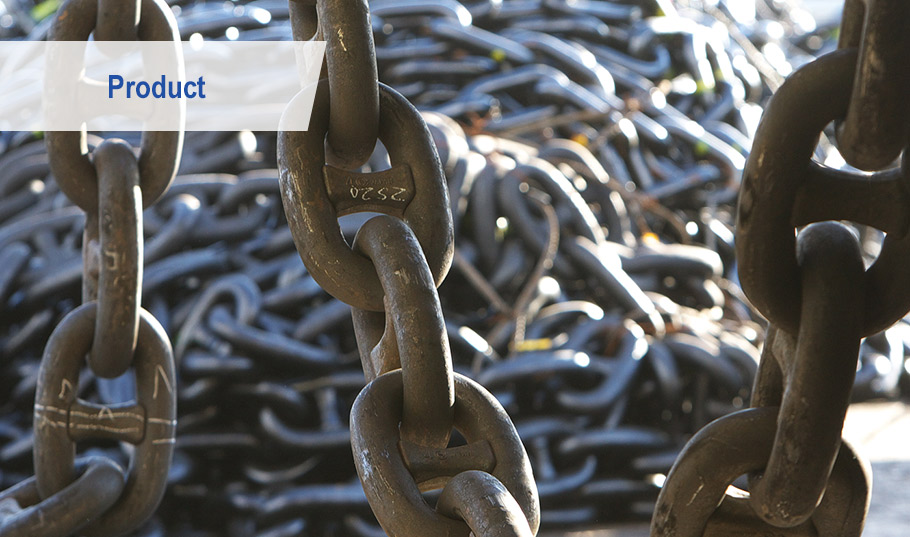It All Began from Manufacturing Nails for Himeji Castle by the Forging Method.
It all began from manufacturing nails for Himeji castle by the forging method.
The whole of the Shirahama town in the city of Himeji is a major production area for chains, with 58 chain manufacturing companies located in the area, which accounts for about 70% of the country's total production of chains.
Regarding the origin of chains, it is said that it started during the Edo period in this area when the construction of Himeji Castle was going on and it was necessary to make forged nails, but the manufacture of nails continued even after the castle had been built. And this is what is called the "Matsubara nail". For that reason, the people of Matsubara village (the present-day Shirahama town in the city of Himeji) had a lot of knowledge and experience in metalworking.
That forging technology was made use of when manufacturing of ship nails began in the middle of the Meiji period.
Chozo Segawa, who was engaged in the sake brewing business in Matsubara village, headed to Osaka at the end of the Meiji period to begin manufacturing of washers, ship nails, etc. around the area of the present-day Nishikujo in Osaka, because the sake brewing industry had stalled at that time.
In addition, he began to manufacture chains by becoming a subcontractor for Osaka Chain Mfg. Co., Ltd. (the present-day Osaka Chain and Machinery Manufacturing Co., Ltd.).
In the 3rd year of the Taisho period (1914) demand for chains rapidly increased because of the World War I and Chozo Segawa, who was forced to deal with the situation, thought about utilizing the forging technology of his hometown, the village of Matsubara, and opened a branch factory near the port of Kiba and Kitamura Chiyokichi, Horie Asakichi and Kumagai Eijiro as well as others were trained there as disciples.
After that, the company's Kiba factory was shut down, but each one of the disciples made use of their acquired skills and started to manufacture chains by themselves. This is the origin of the chain production industry in the Shirahama region.

This way, chains became to be produced in the whole region of Shirahama, but the production method at the time was a by forging, so its volumes were low.
As for thin chains, mechanized manufacturing method using electric welding machine (upset butt) was devised around 1940, and mass production became possible.
Regarding marine chains, since the former forging method and the cast steel method required lots of manual labor, there was a limit to how large products can be made and to volumes that could be produced, and only chains with low tensile strength could be manufactured. However, in 1957, a heavy welding machine (flash butt) was introduced from abroad and later when it was produced in Japan, it became possible to handle and mass produce high quality thick chains.
That is how the whole area of Shirahama was turned into a large production area for both thin and thick chains.

